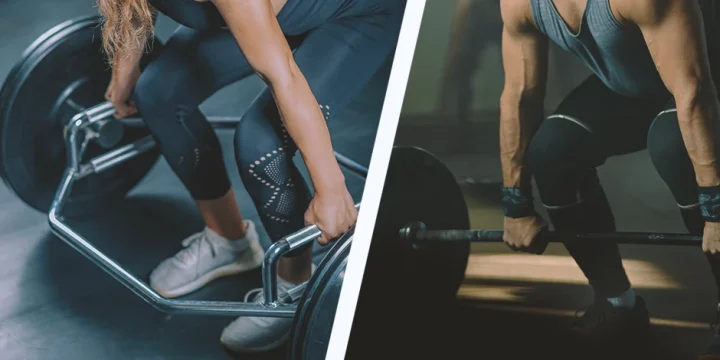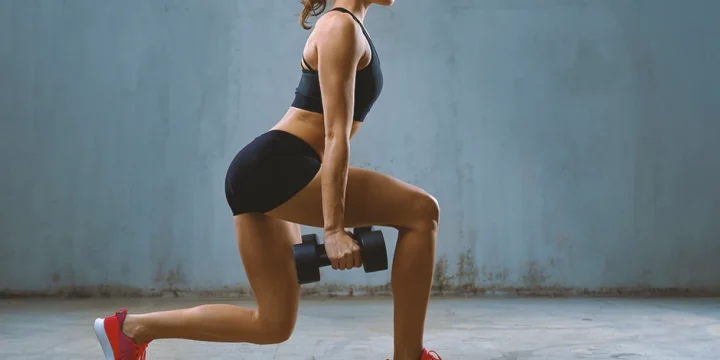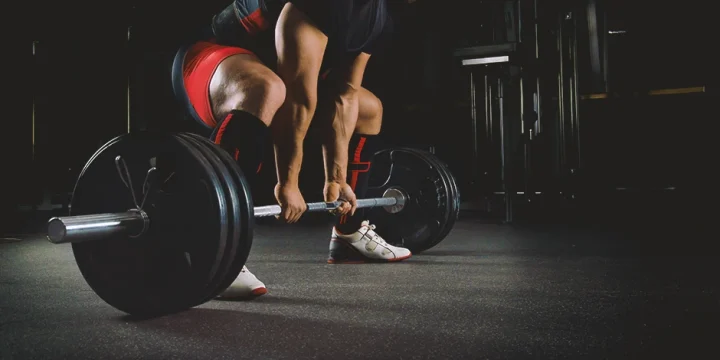In 1980, Al Gerard, a competitive lifter struggling with back pain, came up with the first trap/hex bar, and its popularity has only increased ever since.
As a certified personal trainer, I’ve found it reduces spine load, adds more variety to your training, and improves athletic performance.
The trap/hex bar is found in weight rooms everywhere, and it should be an essential part of your fitness regimen.
Here are the best trap bar exercises for you to try today.
Quick Summary
- The top five trap bar exercises, including deadlifts, floor presses, overhead presses, bent-over rows, and farmer's walks, have significantly enhanced my strength and muscle development.
- I've found the trap bar deadlift to be an excellent starting point for beginners, offering a safer and more effective alternative to traditional deadlifts due to its ergonomic design.
- Research from the National Center for Biotechnology Information website aligns with my observations that hex bar deadlifts allow for handling heavier loads compared to conventional barbell deadlifts, proving their effectiveness in strength training.
- Personally, I consider trap bar exercises an essential part of diverse training routines, offering variety and safety, especially beneficial for those concerned about back health.
1. Trap Bar Deadlift
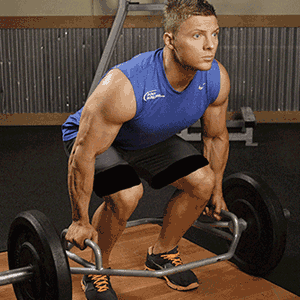
In my personal training experience, I've introduced many beginners to the trap bar deadlift. It's a game-changer, especially for those intimidated by traditional deadlifts. Standing in the middle of the weight makes it more approachable and less daunting for my clients.
According to one of the studies found on the National Center for Biotechnology Information website, the barbell deadlift was clearly superior in activating the biceps femoris compared with the hex bar deadlift and hip thrust, whereas the hip thrust provided the highest gluteus maximus activation [1].
Another study also found on the National Center for Biotechnology Information website that compared typical mechanical variables of interest obtained directly from barbell motion during deadlift performance with a conventional (CBD) and a hexagonal barbell (HBD) and found that significantly heavier loads were lifted during HBD (6%, p = 0.003) [2].
Trap Bar Deadlift Benefits
- Beginner-friendly — It helps beginners increase muscle-growth, understand hinging mechanics, and minimizes hyperextension (over-pulling).
- Can help prevent back injuries — A coach can take precautionary measures with a tall or a beginner lifter because trap bar deadlifts limit the range of motion (ROM) and lumbar stress because of a more vertical back angle.
- Diversify pulling strength — A variety of exercises can be used to diversify strength and enhance muscle growth.
“I prefer it for many athletes and lifters due to the SHEER fact that they can execute the lift with better form, better musculature targeting, and in a far better position to take unwanted stress off the spinal column.”
- John Rusin, Sports Performance Specialist & Injury Prevention Expert
How To Do It
- Step inside the trap bar with the feet shoulder-width apart
- Grip the handles so your hands are centered in the middle of the bar
- Pull the shoulders down, stick up the chest and flatten your back
- Push through the feet and stand up
- Lower it down and repeat
Pro Tip: To emphasize the glutes and hamstrings, when the bar comes up and your hands are at the knees, shoot the hips forward and shoulders back.
2. Trap Bar Floor Press
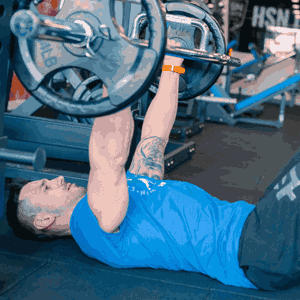
I've personally found the trap bar floor press to be a lifesaver for clients with shoulder issues. The limited range of motion allows them to build strength without aggravating their shoulders, something I've witnessed time and again in my training sessions.
With this trap bar exercise, the triceps, shoulders, and pecs all get a workout, with no risk of shoulder rotation.
Trap Bar Floor Press Benefits
- A great option if you struggle with shoulder pain — Limited ROM will allow you to do the movement in a pain-free way.
- Better lockout strength — You can handle heavier loads without too much strain on the rest of the body.
- Chest and triceps builder — It’s a great exercise to add chest, shoulder, and triceps mass without overexerting the shoulders.
Trap bar training tips: do 3-5 and 6-15 reps to build chest and triceps.
How To Do It
- Start by setting the trap bar on the squat rack
- Lay underneath the rack flat on your back with the knees up and feet flat on the floor
- First use flat handles, as D ones are more challenging
- Press up the trap bar with wrists neutral
- Lower until you feel the upper arm touch the floor and repeat
Do 4-5 sets of 3-6 reps. If muscle growth is what you’re going for, do 3 sets of 6-12 reps.
3. Trap Bar Overhead Press
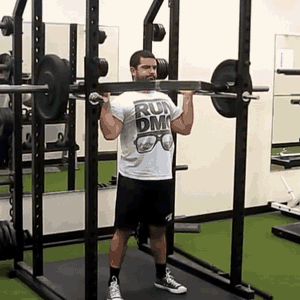
From my own training and coaching others, the trap bar overhead press has consistently proven effective for sculpting a more defined upper body. It's a personal favorite of mine for targeting the deltoid heads, and I've seen remarkable improvements in my clients' upper body strength.
It’s the equivalent of doing a barbell deadlift shoulder press with no head. One thing I warn my clients about — careful with the grip. If you’re narrow-shouldered it can be too wide.
Trap Bar Overhead Press Benefits
- Targets shoulder muscles, triceps, and traps.
- Great barbell substitution if you’re having shoulder pain — Neutral grip alleviates the tension.
- Safer than the military press — With military press insult to the shoulder joint piles up over time. The overhead press is safer for the shoulder, as it puts it into a more natural position.
How To Do It
- Put the barbell to below shoulder height and load the desired weight to it
- Step inside the trap bar with feet shoulder-width apart
- Place hands on the handles with a natural grip
- Inhale and press the bar to lockout overhead until the arms are straight
- Exhale and pause for a second at the top
- Lower the bar down and repeat
If you’re doing the trap bar shoulder press for strength do 6-8 reps of 3-4 sets.
4. Trap Bar Bent Over Row
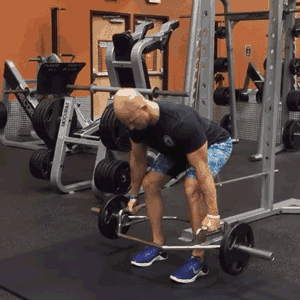
Having incorporated the trap bar bent over row in both my personal workouts and client sessions, I can attest to its effectiveness for back development. It's a functional exercise that I've seen yield significant improvements in back strength and posture. It’s easier on the back because of the elevated handles.
This means the lifter doesn’t have to hinge over so far to support the weight. The exercise has built-in autocorrect. Unless you bend over enough the bar will hit you in the ass. This is a great feature, as it limits the possibility of wrong body position.
Trap Bar Bent Over Row Benefits
- Neutral-grip handles — You can challenge the biceps, traps, lats, and forearms with more weight than with a standard barbell
- No stress on the lower back — The weight is moved from in front to the midline
- Neutral grip brings the elbows closer to your sides, which is easier on the elbows
- Great companion exercise for deadlifts and pull-ups because of the hinge position
How To Do It
- Load up the bar and stand in the center
- Hinge down and grab the high handles
- Keep the chest up, neutral spine, and glutes pushed back
- Lift the bar and hold it at the top for a second
- Slowly lower the bar down to complete
Do 8-12 reps for 3 sets.
5. Trap Bar Farmers Walk
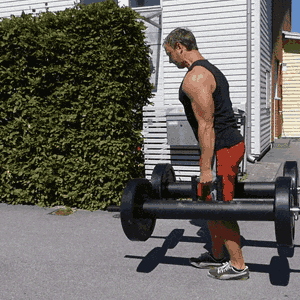
In my years of coaching, the trap bar farmers walk has been a cornerstone exercise for full-body conditioning. It's not just about grip strength; I've seen it enhance overall endurance and stability in numerous clients.
It’s a better choice compared to other weighted carries. Dumbbells can be clumsy to pick up, set down, and walk with, and can raise the risk of injury. On the other hand, with the trap bar you can pack on the weight without hindering the execution.
Trap Bar Farmers Walk Benefits
- It’s simple — Just walk carrying the weight
- No weight limit as with the dumbbells
- Better should stability
- Improves posture
- Helps with building glute and hamstring strength
- Read world strength — Whenever you need to pick up something heavy and walk with it, such as several bags from the grocery store, you’ll be ready.
How To Do It
- Load the trap bar and go to the center
- Grab the high handles
- Do a deadlift to pick the bar
- Start walking. Don’t hurry, take small steps
- Keep the chin in, shoulders back, and chest up
- Walk for the chosen distance or until the time runs out
Do 3-4 sets, 30-60 seconds per set.
Other exercises you should try:
What Is the Best Trap Bar for Home Gym?
The best trap bar for home gym is Rogue Fitness TB-1 Trap Bar 2.0. The Rogue Fitness TB-1 Trap Bar 2.0 has a traditional trap bar layout with a very sharp knurl on the neutral handle grips, and it's largely compatible with all regular Olympic plates.
I liked how the pricing is also quite fair, making it a fantastic bargain for the quality of the frame and design. It is rackable, well-constructed, and made of heavy-duty materials, with consistent knurling across the handles.
Another good option is Rogue Fitness TB-2 which has two handles that boost the bar's flexibility.
The high handles are ideal for practicing various ranges of motion. They are about 8 inches above the lower ones. Both 34mm handles are knurled with a medium profile; however, the low handle is the only one that has been knurled from end to end.
The TB-2's hex bar frame measures 25" from grip to grip. Regarding the sleeves, a smooth space between the hex framework and the collar allows this bar to be rackable. The TB-2 Rogue Trap Bar is an excellent choice for most individuals looking for a basic closed bar.
FAQs
Can You Do Squats With Trap Bars Exercise?
Yes, you can do squats with trap bars exercise.
Trap bar squat and deadlift are often used interchangeably. The difference is that in a deadlift you lift the bar from the floor, while in a squat you hold up the bar to the chest and squat.
Is the Trap Bar Easier Than a Straight Bar?
Yes, trap bars are easier to use when you’re first learning to lift. They’re user-friendly, help with the positioning and teach you about leg drive.
Is the trap bar worth it?
Yes, it is. A study found that people can lift more weight with the hex bar, and it’s better for reaching (2):
- Velocity
- Power
- Peak force
Another great variation is the trap bar suitcase carry or trap bar squat.
Is a Trap Bar Better Than a Barbell Row?
Yes, a trap bar is better than a barbell row. Although both variations target the posterior chain, they emphasize different muscle groups.
Switch from a barbell shoulder press to a trap bar, because barbell row limits ROM movements. More ROM equals more results.
What Is the History Behind the Trap Bar?
Powerlifter Al Gerard invented the trap bar to reduce strain on his back during deadlifts. Its design has evolved over the years, becoming a versatile tool for various strength training exercises.
How Do Trap Bar Exercises Differ Biomechanically from Traditional Barbell Exercises?
Trap bar exercises typically place less stress on the lumbar spine and involve a more upright torso position compared to traditional barbell lifts. This results in different muscle activation patterns, potentially reducing injury risk and targeting muscles differently.
Can Trap Bar Exercises Be Used for Rehabilitation and Injury Prevention?
Yes, trap bar exercises are often used in rehabilitation and for injury prevention due to their reduced spinal loading and more neutral grip. They are particularly beneficial for individuals recovering from lower back injuries or those looking to minimize lower back stress.
How Can Trap Bar Exercises Enhance Specific Sports Performance?
Trap bar exercises can be tailored to improve explosive power, strength, and stability, which are crucial for sports like football, basketball, and track and field. They help in developing the posterior chain muscles, which are key for sprinting, jumping, and tackling.
What Are Some Advanced Training Techniques with the Trap Bar?
Advanced techniques with the trap bar include eccentric overload for muscle hypertrophy, isometric holds for strength endurance and plyometric variations for explosive power. These methods add intensity and variety to workouts, challenging the muscles in new ways.
References:
- https://pubmed.ncbi.nlm.nih.gov/28151780/
- https://www.ncbi.nlm.nih.gov/pmc/articles/PMC5969032/
About The Author
You May Also Like


